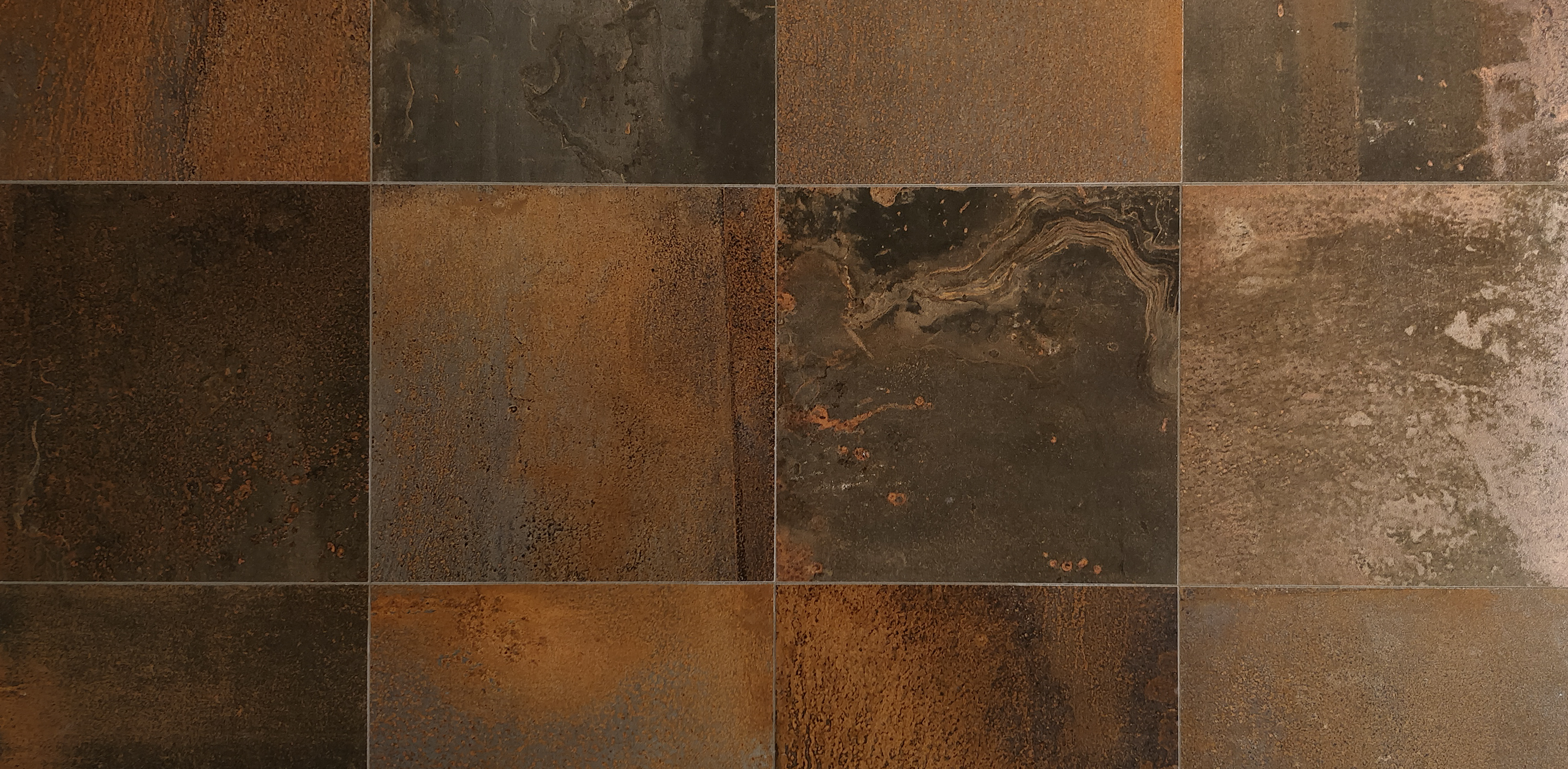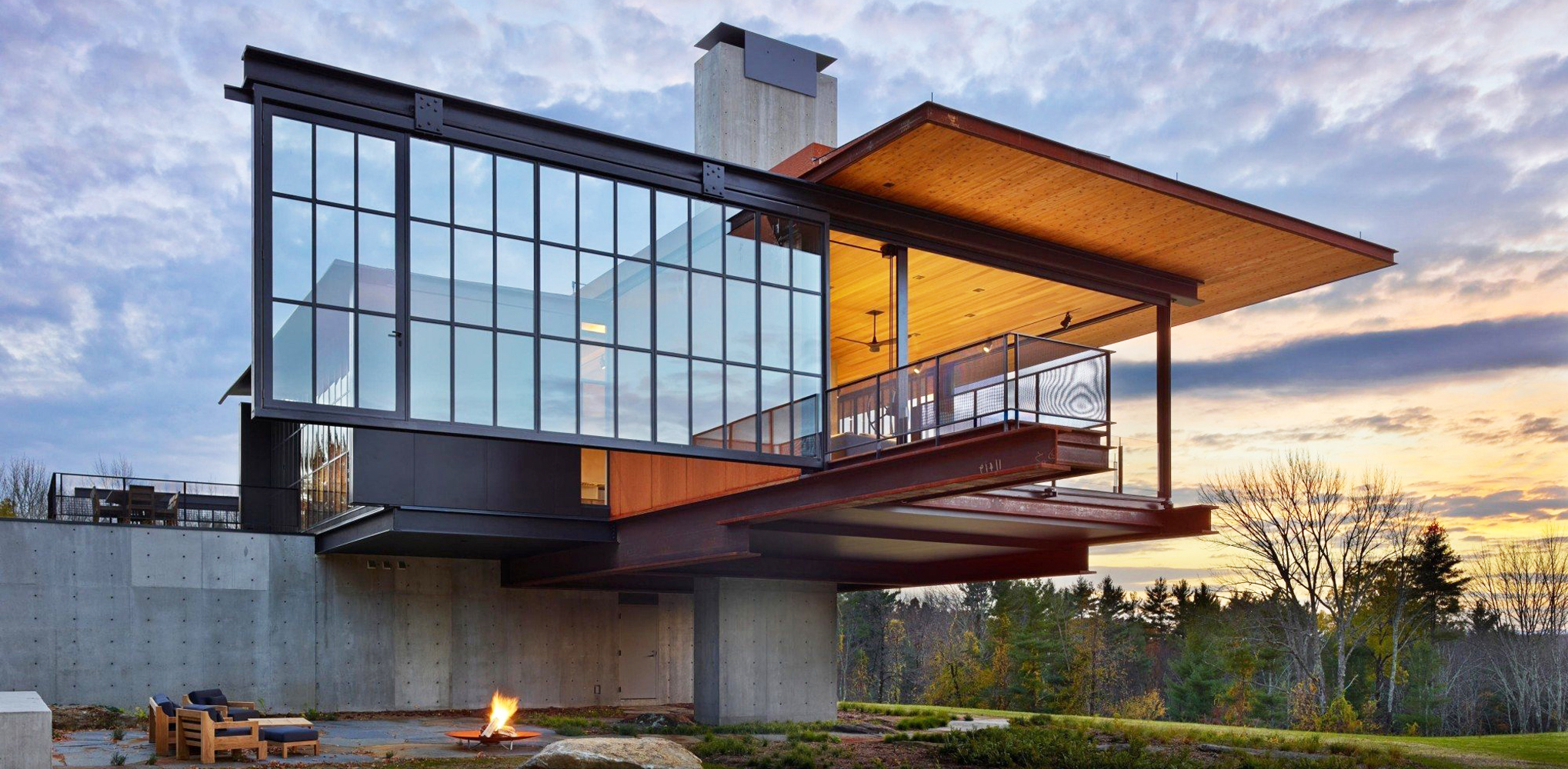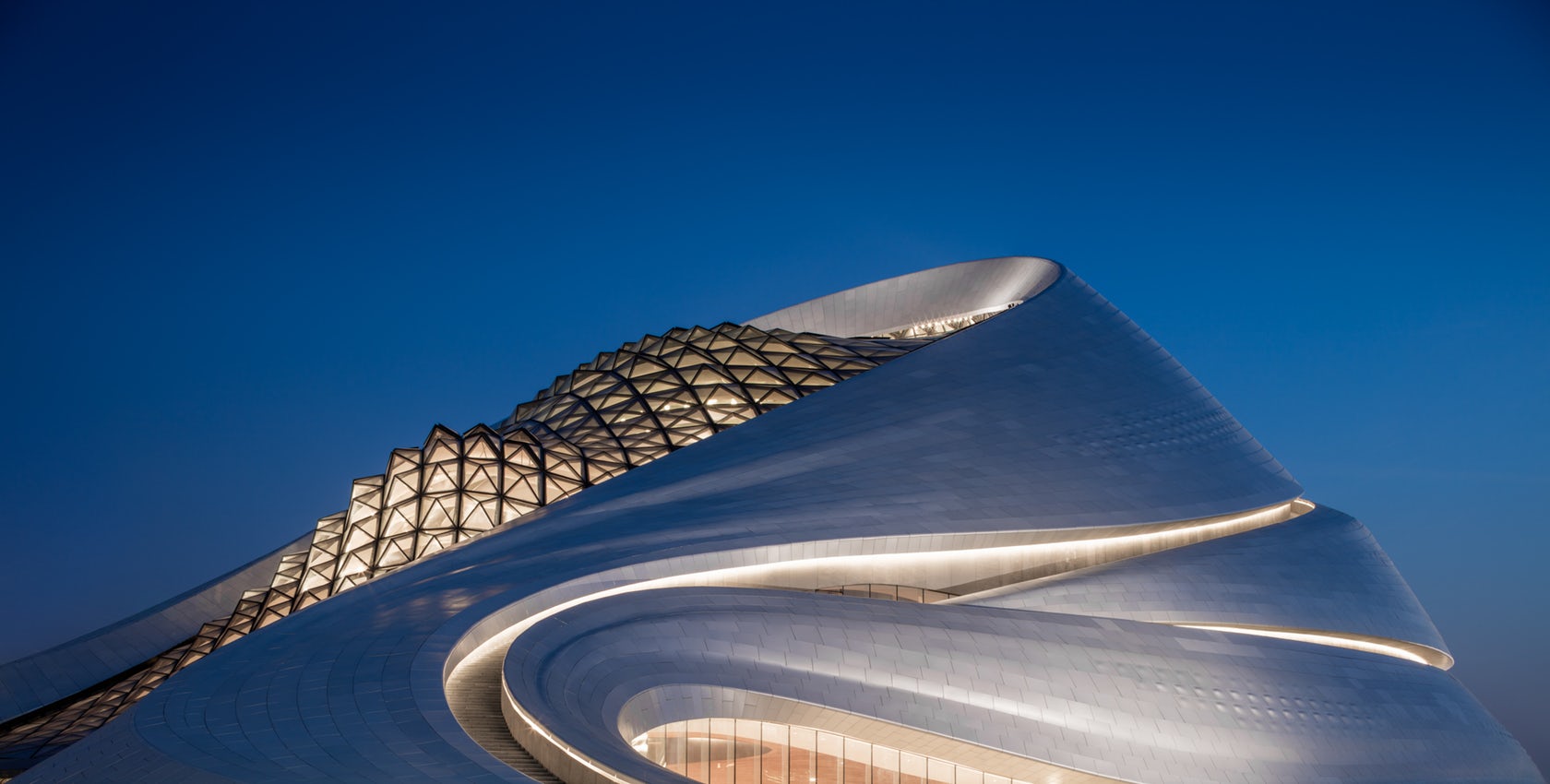Find the perfect tile and stone products for your next project through Architizer’s new community marketplace for building-products. Manufacturers: Check out the latest construction leads and sign up now.
The first thing you notice about Coverings, arguably the world’s premier trade show for contemporary tile products, is its size. It is VAST. Attending this year’s event in Atlanta, Georgia, a grand total of 26,000 industry professionals from around the globe showcased their latest tile offerings, each looking to stand out from their competitors and win the hearts of designers and contractors alike. It’s no wonder: U.S. ceramic tile consumption in 2017 was $3.65 billion, up 5.8% on the previous year. That’s a record high, and while this presents an amazing opportunity for manufacturers, it’s also a fairly mindboggling marketplace for architects to navigate.
With this in mind, Architizer embarked on a mission to distill Coverings down to the key trends that designers should watch out for as they search for tile products during the coming year. Looking closely at offerings from the major North American, Spanish and Italian brands, certain key patterns emerged relating to texture, scale, color and custom finishes.
While each brand exhibited its own unique style, the following four trends were particularly notable on the show floor: rich, natural textures; large format, super thin slabs; high-contrast colors and warm shades; and metallic finishes. Here, we take a look at each trend and highlight some of the brands that are leading the way this year.
Rich, Natural Textures
Tile manufacturers have long been working on techniques to produce textured finishes that imitate raw materials like metal and wood, but many brands took this art to new levels at Coverings 2018. Numerous manufacturers showcased weathered effects inspired by antiquated wood and rusted steel, each with more depth and tonal variation than previous years.
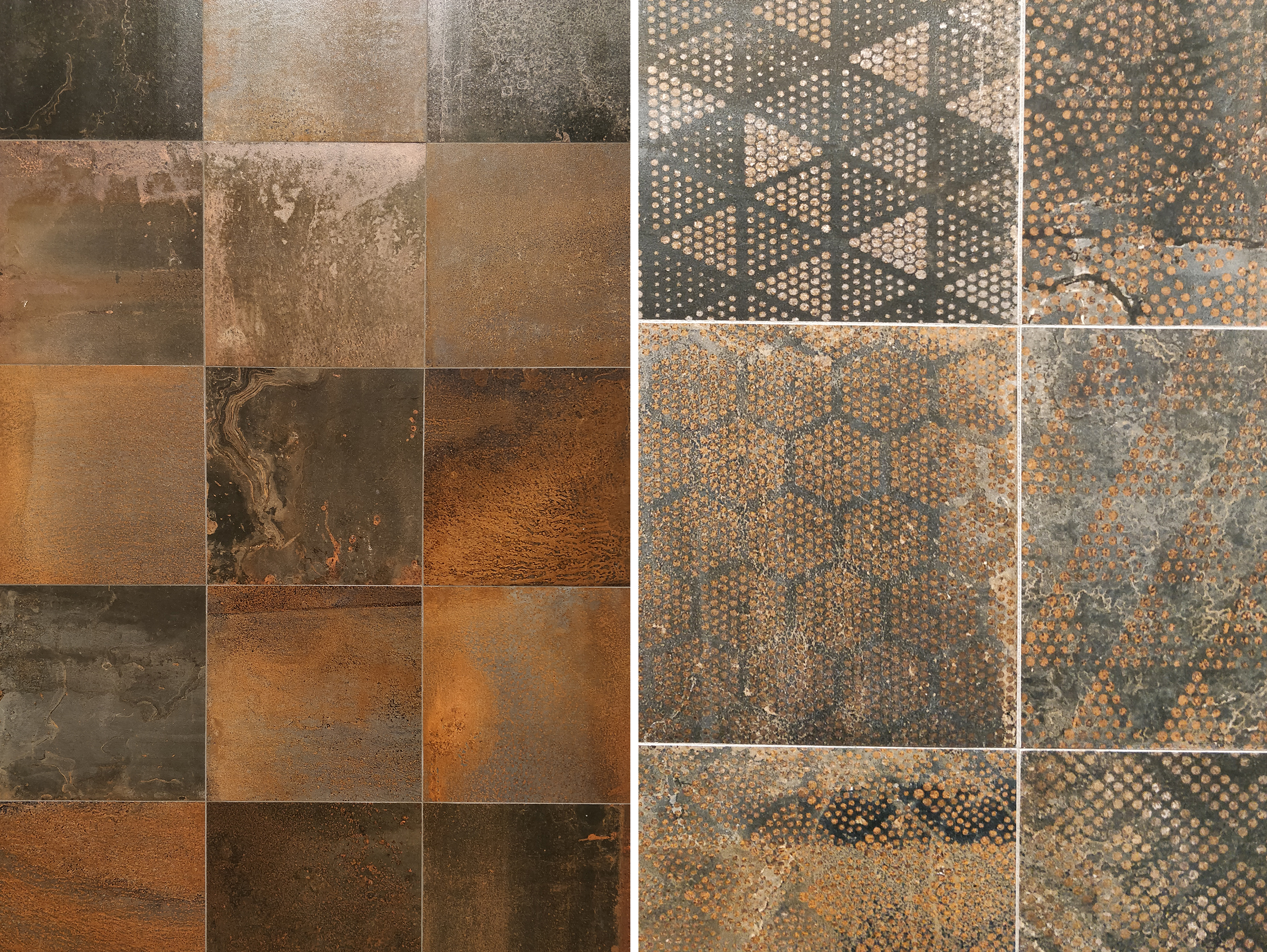
Ceramica Sant’Agostino’s “Oxidart” porcelain tile collection; photo by Paul Keskeys
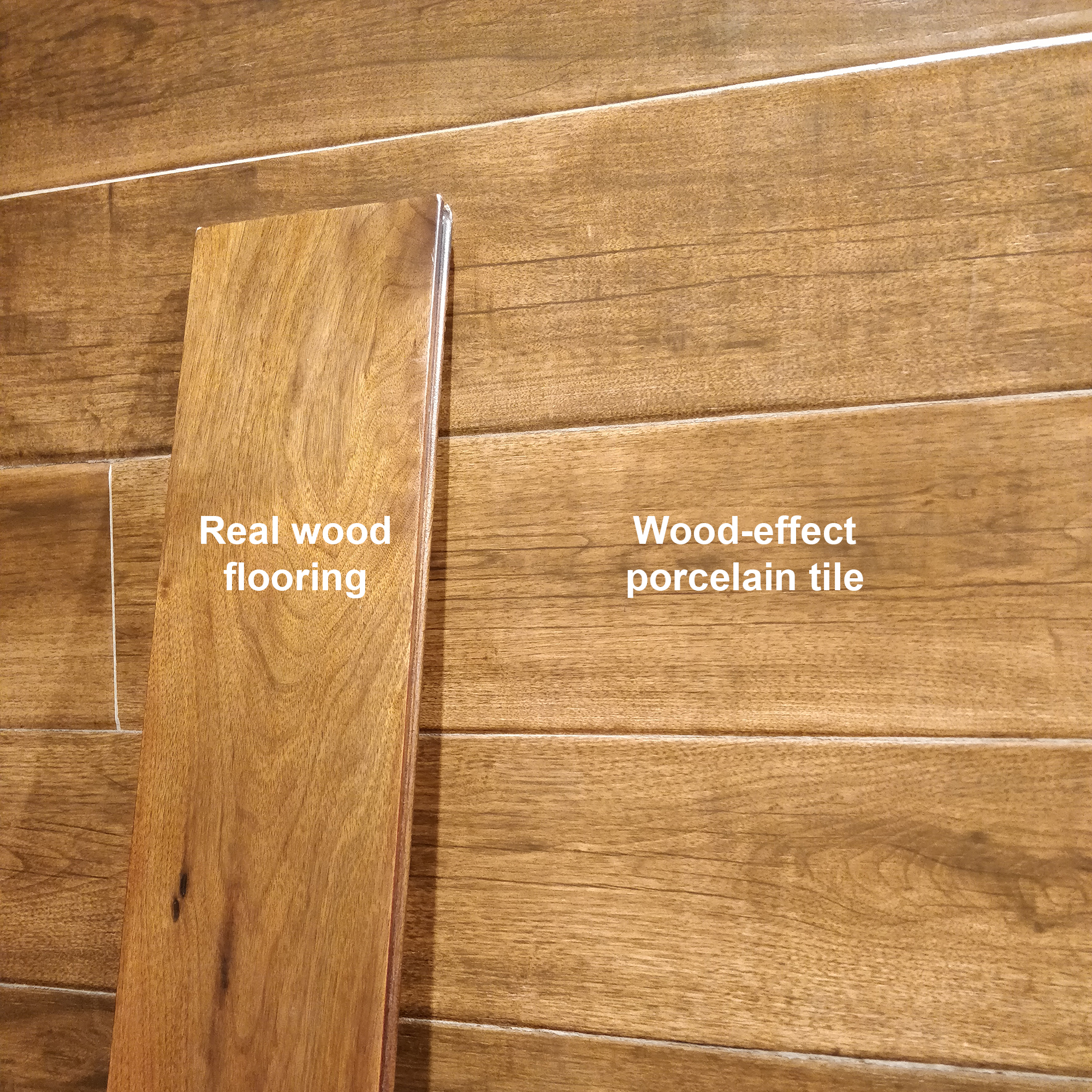
Comparison between a real wood floor plank and imitation wood tile by Ceramica Sant’Agostino at the show; photo by Paul Keskeys
Among the highlights in this category was Ceramica Sant’Agostino’s “Oxidart” tile series, which mimics the look of weathered steel in stunning fashion. Offered in silver, iron, copper and black variations, the immense depth and texture of these tiles makes them a must for any architect in love with corten steel.
Ceramica Sant’Agostino also presented an extraordinary wood-effect tile that replicates the appearance of polished oak so accurately that it proved challenging to tell the two materials apart at the show.
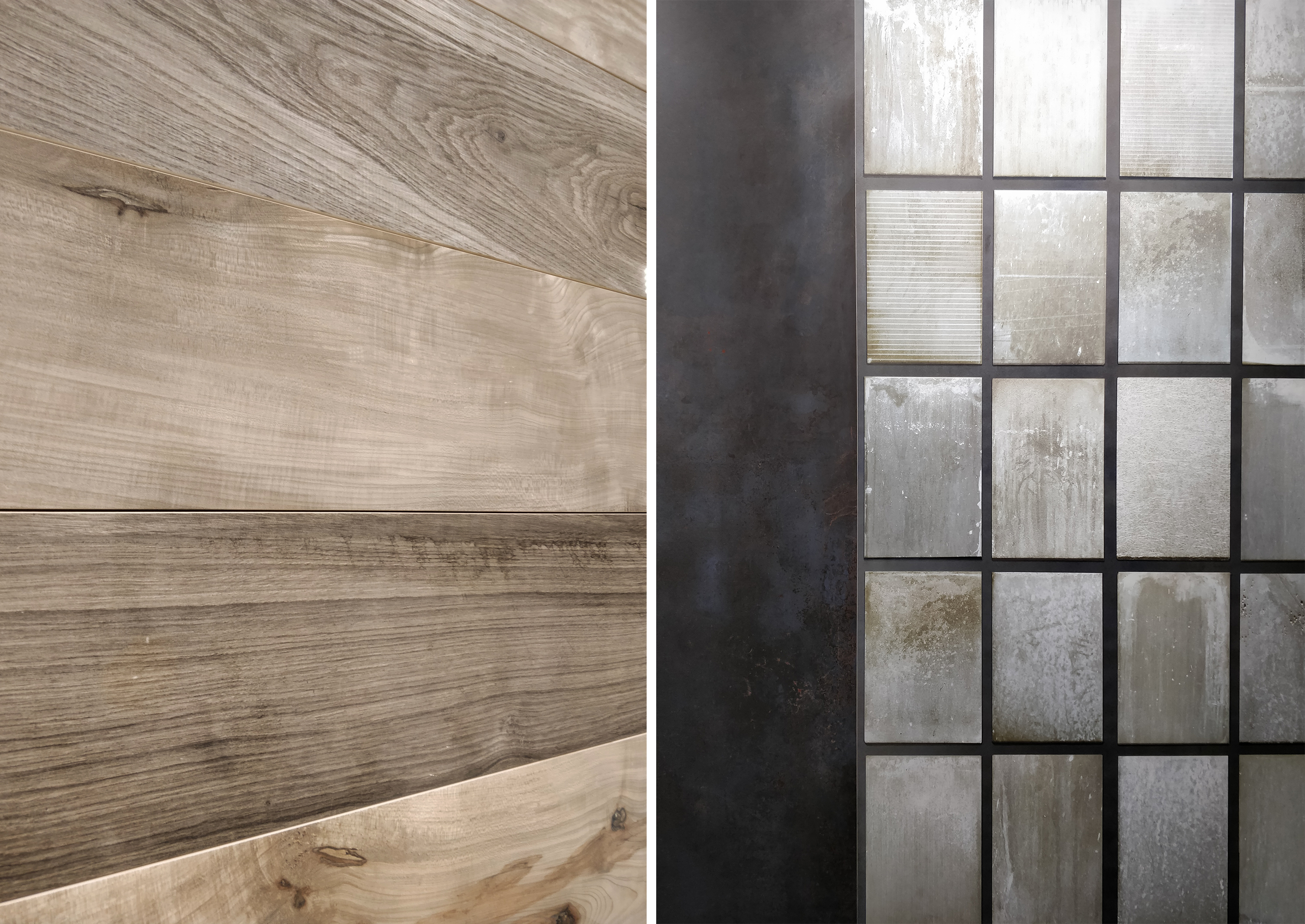
Left: A sample from the “Cerim” collection by Florim; “Tube” by Cooperativa Ceramica D’Imola
Another renowned Italian brand — Cooperativa Ceramica D’Imola — brought generous helpings of industrial chic to the show in the shape of Tube, a collection of muted metallic finishes that appear time-worn and effortlessly stylish in equal measure.
In contrast, Florim — the overall “Best in Show” winner at Coverings — combined the classic look of rustic wood with a high gloss finish with its Cerim collection, introducing a welcome twist to the many wood-effect tile floor planks being exhibited.
Large Format, Super Thin Slabs
Modern manufacturing processes now allow tiles to be created at an unprecedented scale. Many brands exhibited continuous marble, stone and ceramic surfaces from floor to ceiling, ideal for high-end hotel lobbies and sleek commercial applications. While unfathomably large in width and height, these slabs can now be made surprisingly thin, keeping their weight to a minimum to aid installation on façades and interior walls as well as floors.
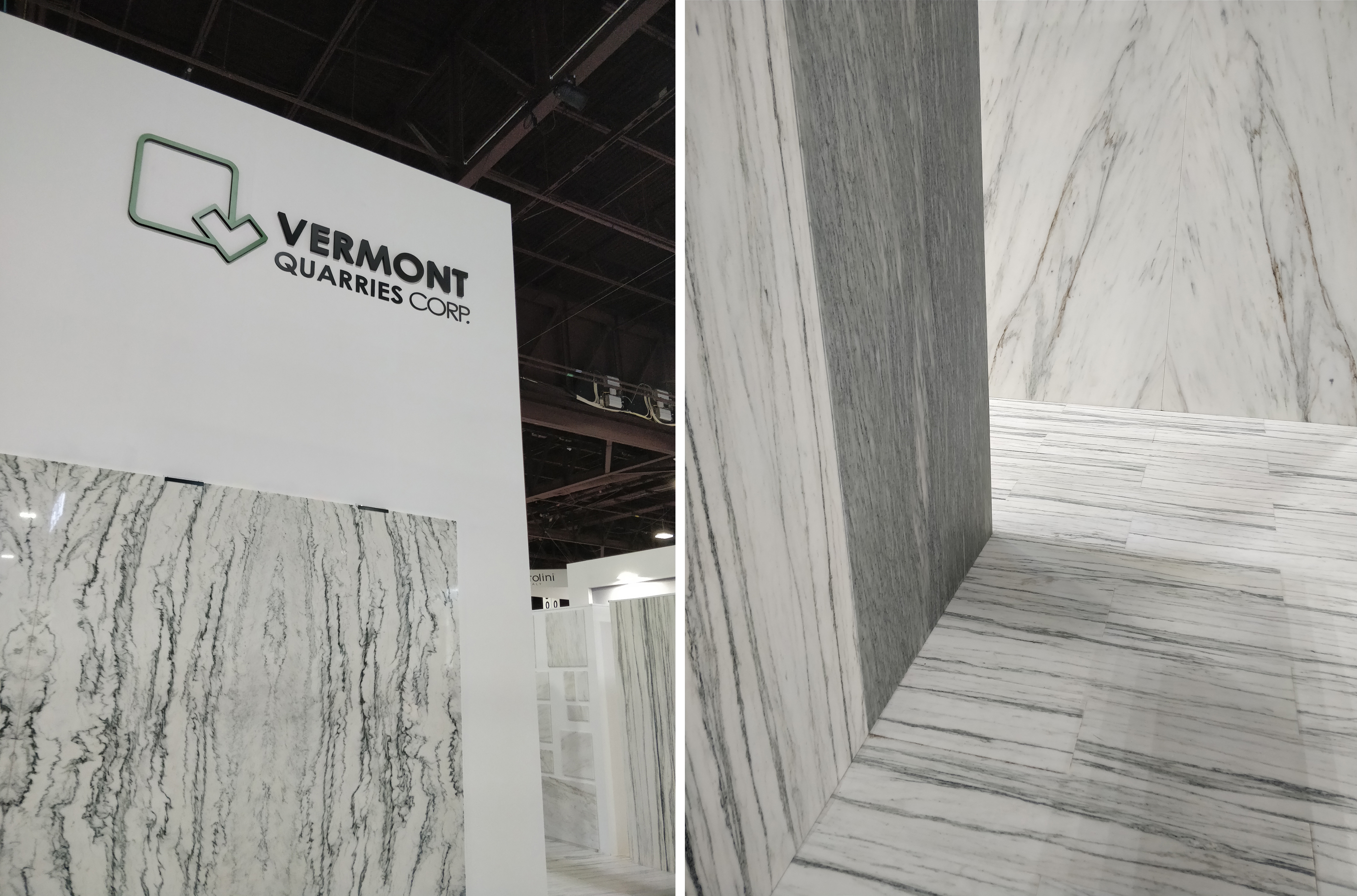
Vermont Quarries presented some of its most striking slabs of Danby marble, its premium “Class A” quality making it suitable for a wide variety of applications including interior, exterior, residential and commercial applications. Subtle variations in hue are available, including Appalachian Green, Danby Gray, Verde Cavendish and Olympian White.
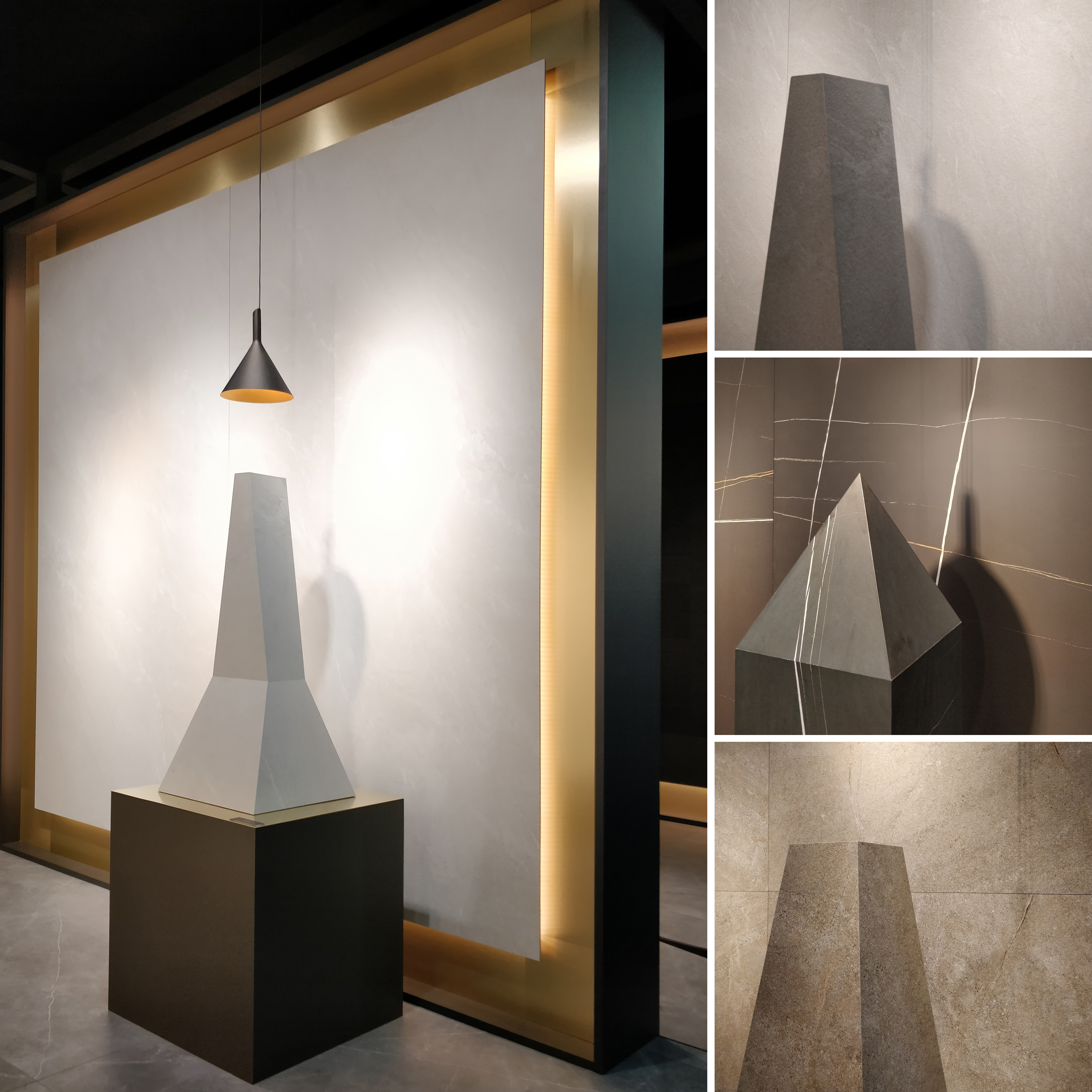
Inalco large format slabs; thumbnails from top to bottom: “Pacific”, “Azalai” and “Jasper”; photos by Paul Keskeys
Another standout booth in this category belonged to Spanish manufacturer Inalco, which showed off its natural finishes with elegant tile-clad obelisks. Inalco’s large-format ceramic tiles — including Pacific, Azalai and Jasper finishes — are produced with jaw-dropping dimensions of up to 3 meters by 1 meter (118.11 inches by 59.05 inches).
Similarly, Tau Ceramica exhibited a series of huge tiles suitable for commercial use, and demonstrated its innovative Asala tile — an induction cooking slab that allows users to prepare, cook and eat their meals from a single surface.
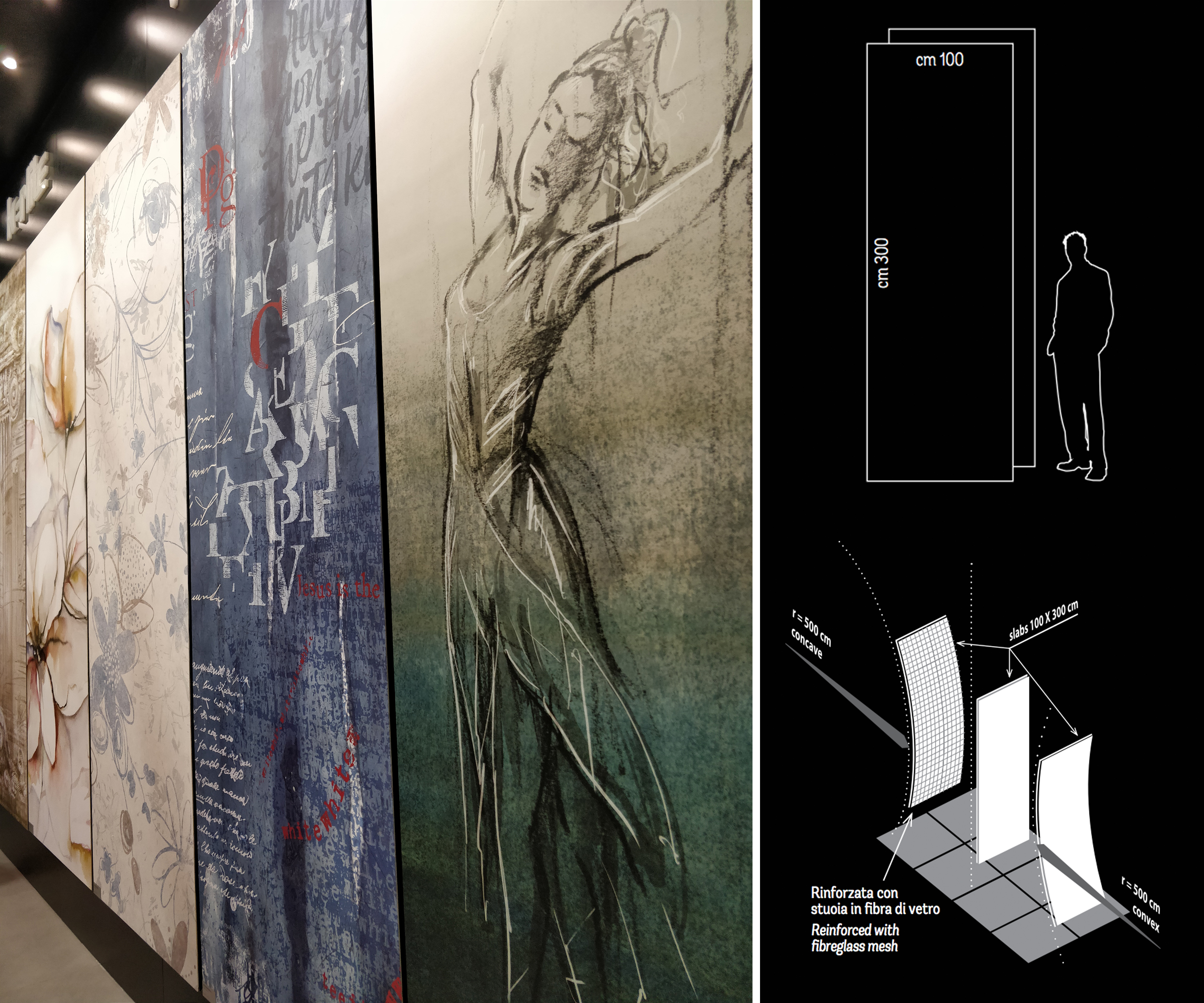
Finally, Cotto d’Este’s spectacular Wonderwall series showcased the potential of custom printing for large format tiles. Printed on a series of story-high Kerlite panels, each displaying high-resolution graphics including text, floral prints and even figurative images. Measuring just 3.5 mm thick and reinforced with fiberglass mesh, Wonderwall demonstrates that interior wall tiles can double as genuine works of art.
High Contrast Colors and Warm Shades
Punctuating the natural cream and gray tones of the larger format slabs, bold color combinations stood out among the smaller-scale tile offerings. A number of brands exhibited contemporary takes on traditional black and white tile combinations, while warm pink, yellow and teal tones added a flash of color to proceedings.
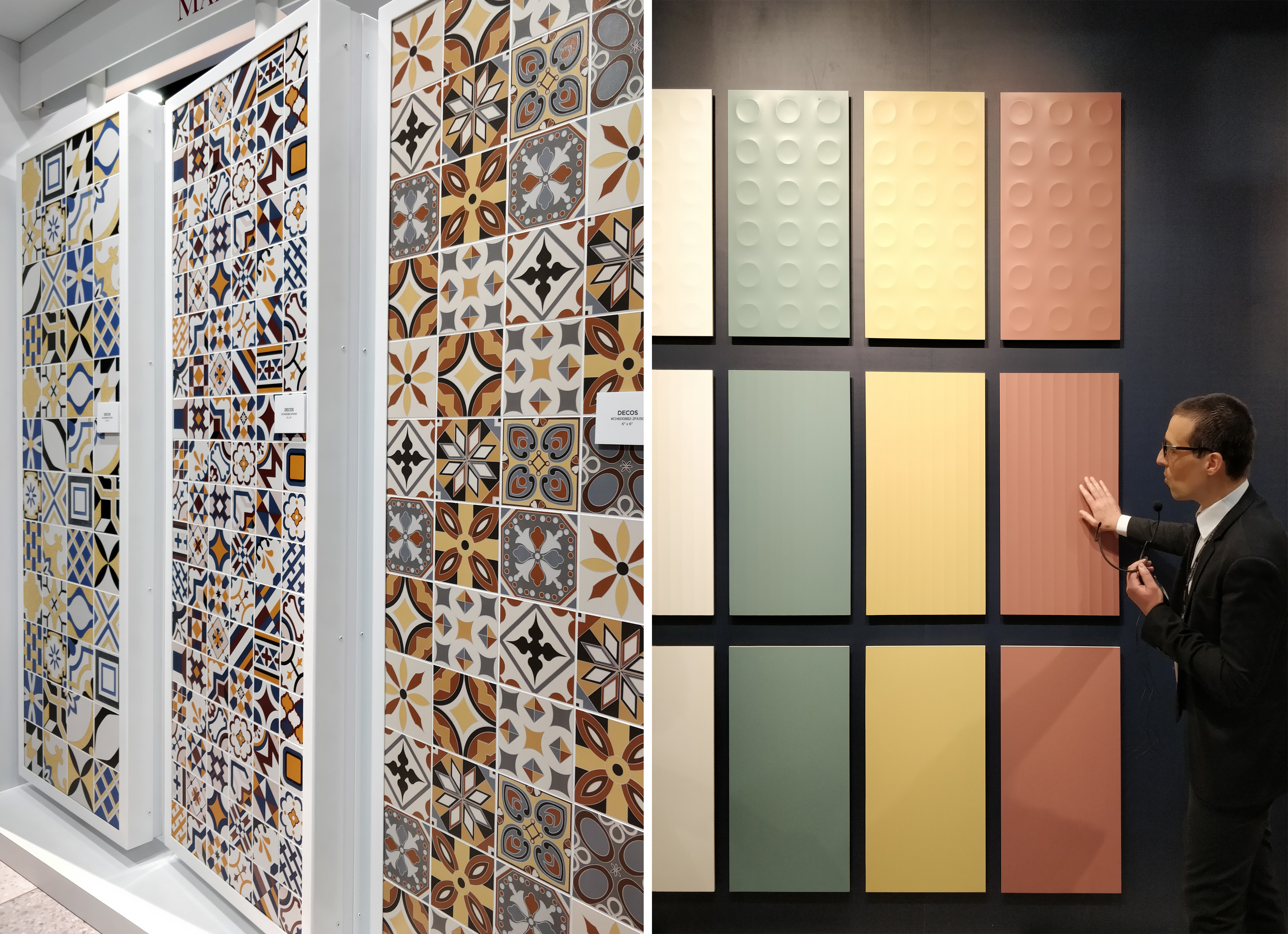
Left: “DECO” by American Wonder Porcelain; right: Marca Corona’s “BOLD” collection
American Wonder Porcelain introduced color and contrast with more traditional geometric motifs, its DECO tile collection being offered in “sizzling” black and white and warm primary colors.
Meanwhile, Marca Corona presented larger blocks of solid color with its BOLD series, a matte tile available in white, sage green, marsala red and mustard yellow. “BOLD blends these contemporary colors to soft surfaces, enhanced by satin-effect glazes with a velvety touch, soft reflections and an appealing brightness,” explained the manufacturers. A choice of two 3D relief structures, forming thin strips and small circles respectively, highlight “the bold originality of the collection and maximize its creative potential.”
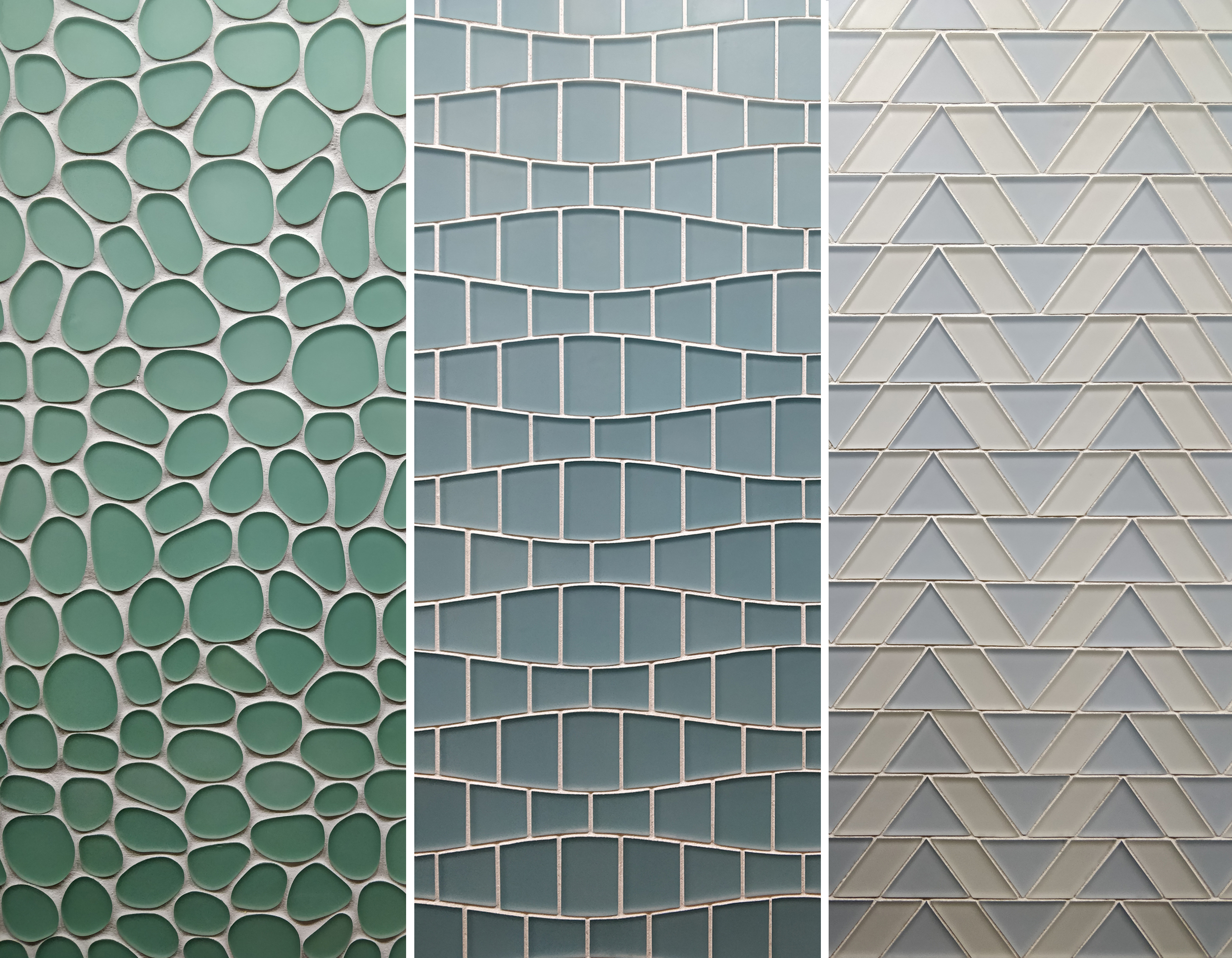
From left to right: “Spindrift”, “Ripple” and “Arrowhead” by Island Stone; photo by Paul Keskeys
Innovative American manufacturer Island Stone showcased a refreshing series of glass tiles in shimmering aquatic colors. Spindrift is a pebble-shaped mosaic of teal glass, Ripple is defined by sinuous, flowing rows of baby-blue tile, while Arrowhead is made of subtle sky blue and clear glass triangles and rhombuses.
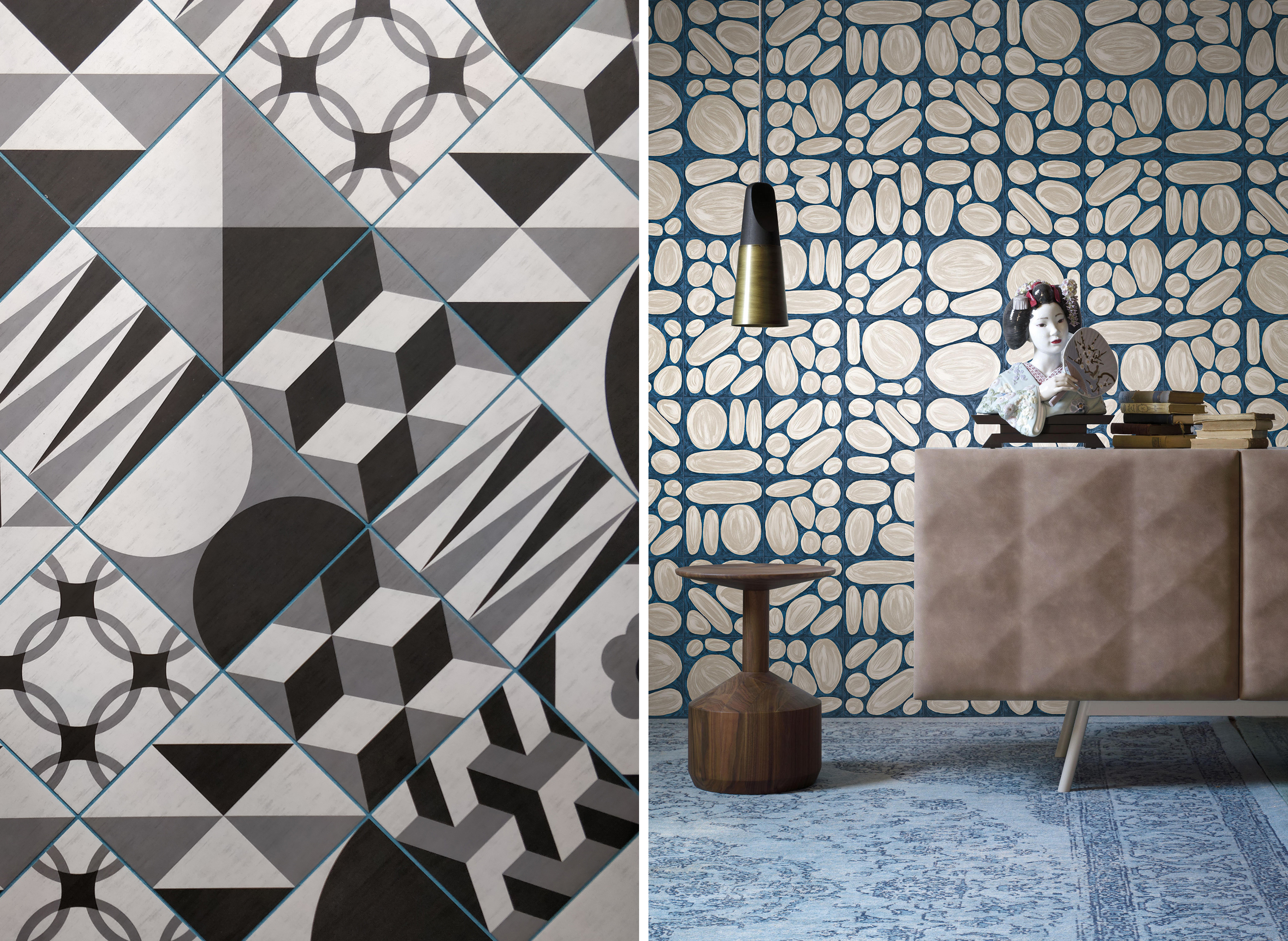
Left: “Gone” by Ornamenta; photo by Paul Keskeys; right: “Manifesto” by Ornamenta; photo via Ornamenta
Finally, Italian decorative tile specialist Ornamenta took home Coverings’ Open Concept Award with its playful range of color combinations, including Gone, a high-contrast black and white tile design that was paired with a vivid blue mortar by MAPEI for the show. Bolder still, the brand’s Manifesto tile sports a distinctive pebble motif in a hand-painted style, and comes in multiple high-contrast color combinations including deep blues, greens and reds.
Metallic Finishes
Less common than colors but no less eye-catching were the metallic finishes, varying from subtle golden hues to shimmering, highly reflective surfaces. Unusual manufacturing processes were implemented to achieve finishes that add a sparkle amidst the neutral tones through the majority of the show.
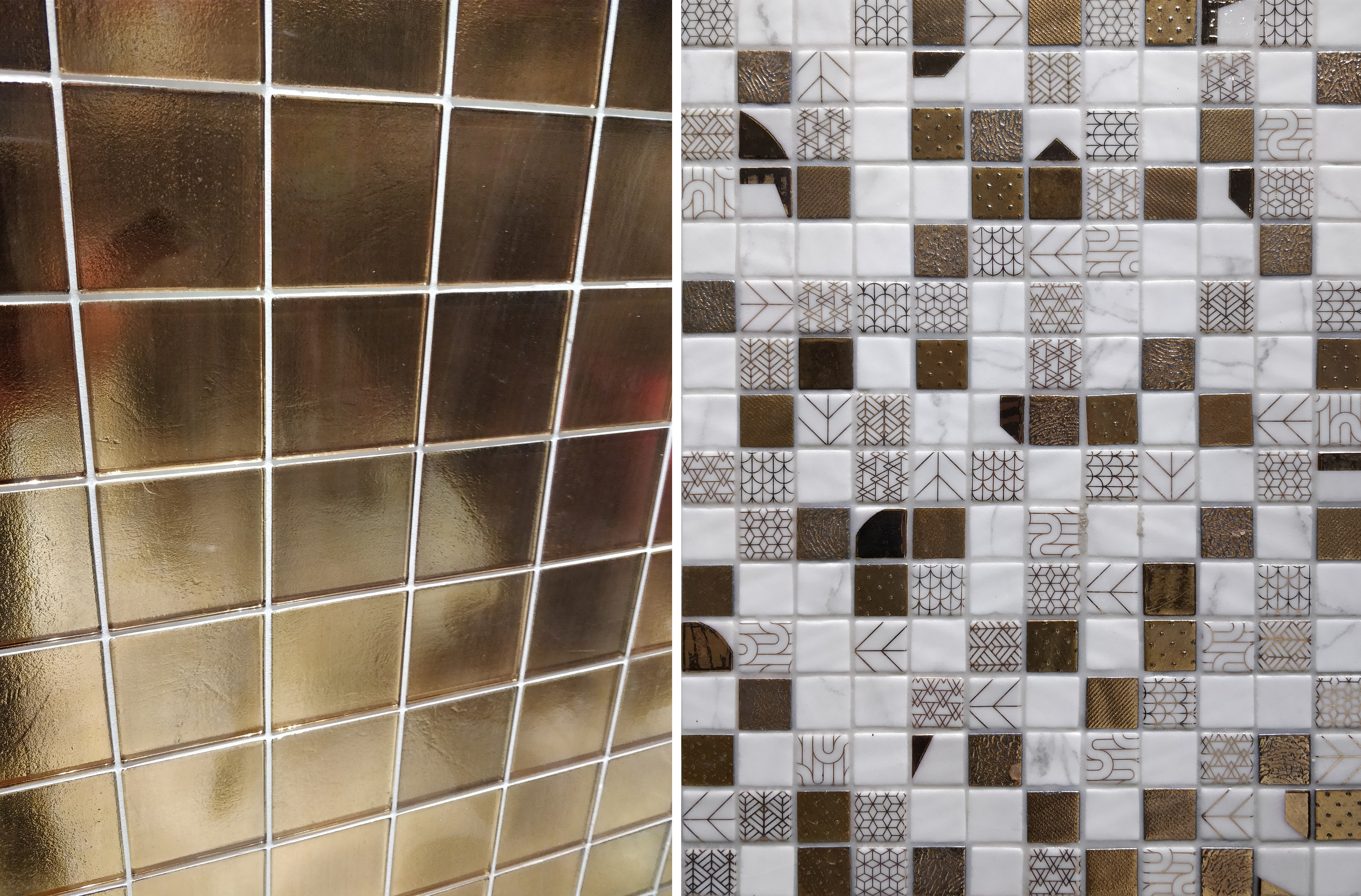
“RIF” by Onix Mosaics, part of the Allure Collection; photos by Paul Keskeys
Spanish glass tile manufacturer Onix undoubtedly scooped the award for the most bling at the exhibition, showing off a rich collection of 24-carat gold tiles. Designed for high-end hospitality, the RIF collection employs this precious metal with varying degrees of intensity, ranging from intricate, shimmering patterns to planes of solid gold.
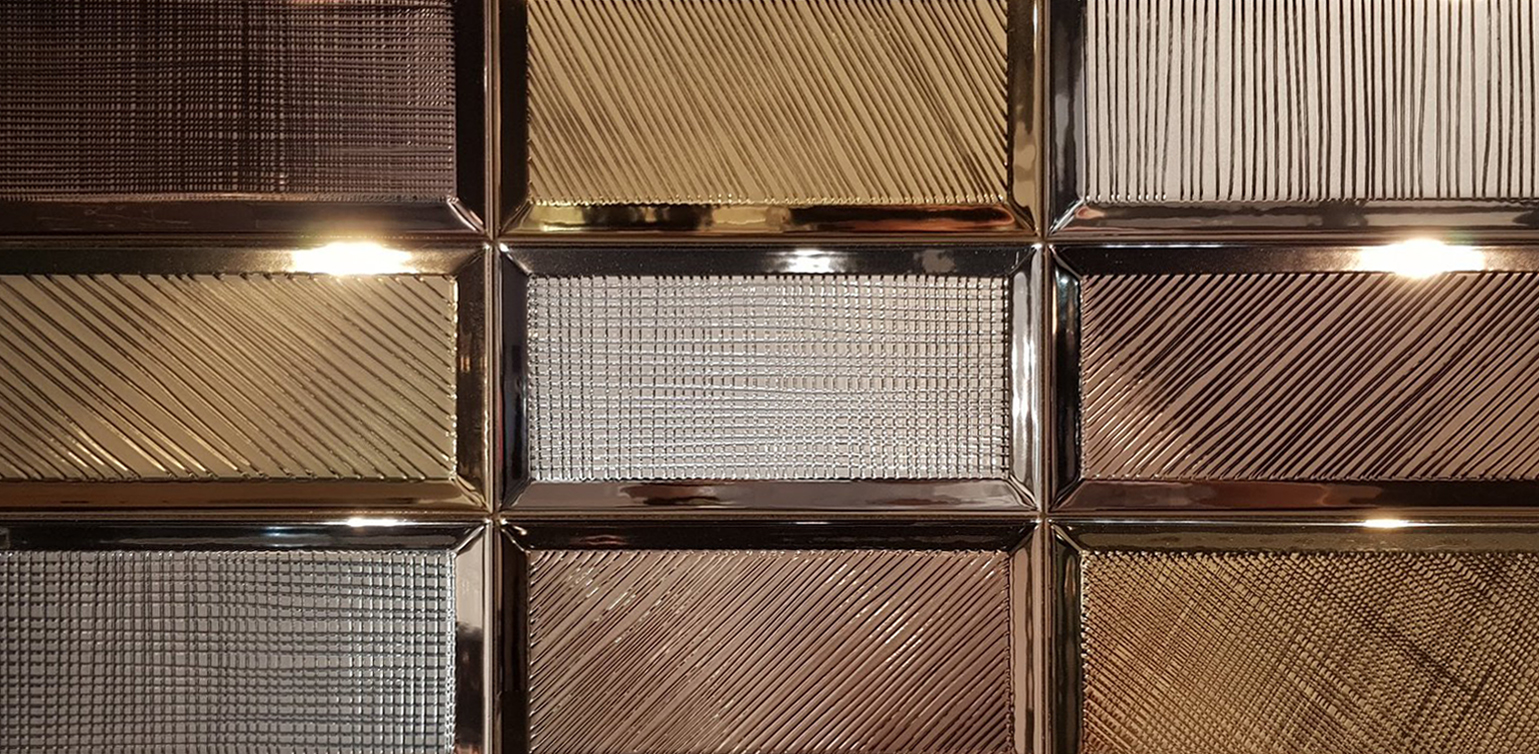
“ARTS” metallic tiles by Colorker; photo via Colorker
Striking a deliberate contrast with the large format tiles at this year’s Coverings, Colorker set out to prove that conventional 20 x 10 cm (7.8 x 3.9 inches) tiles could be reimagined for a modern market. Its ARTS collection is dipped in metallic paint, similar to the way in which automobile parts are finished, producing a highly reflective finish in gold, silver and bronze.
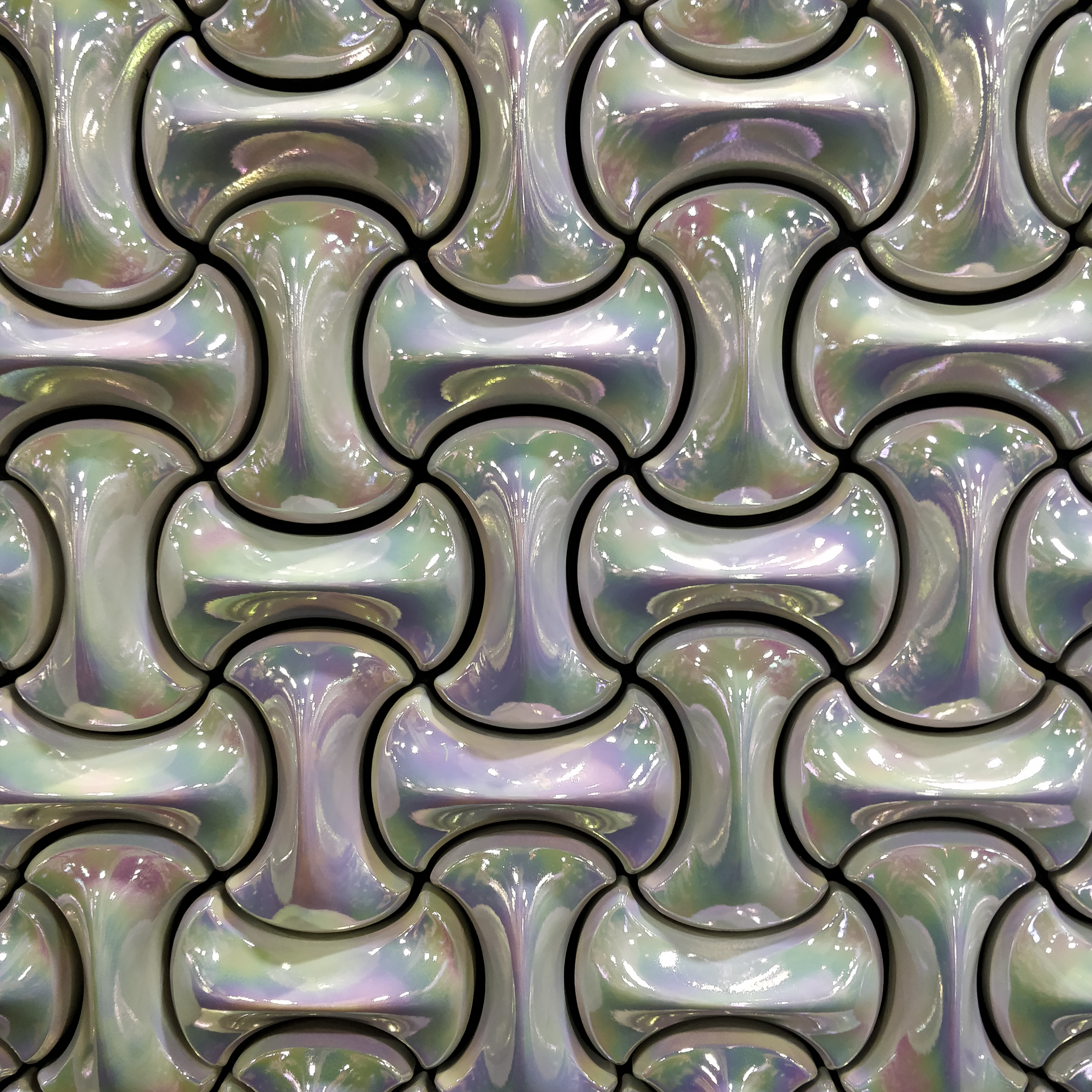
“VITCELLA” tile by Taniguchi Seitosho Ltd; photo by Paul Keskeys
Perhaps the most eye-catching metallic effect, though, was showcased by Taniguchi Seitosho Ltd. The Japanese manufacturer’s unusual VITCELLA tile — part of the Komino series — possesses a pearlescent quality, its small, curvaceous 3D shape packing a visual punch unlike most interior wall tiles at this more domestic scale.
Many more brands exhibited products following these trends, while others simply improved on conventional choices — larger, thinner, lighter weight panels, more options pertaining to tone and marbling, and further color combinations for different applications. If there was one major takeaway from the show, it was this: Tile and stone manufacturers are growing in confidence following the global financial crisis of 2008, and are now flexing their creative muscles to offer more ambitious commercial products than ever.
Viewed as a whole, Coverings 2018 constituted a vibrant celebration of decorative tile products developed using cutting-edge technology and advanced manufacturing processes. If Atlanta’s vast exhibition halls are anything to go by, audacious applications of tile should become increasingly common among architectural projects in the coming years.
Search for the best tile and stone products through Architizer’s new community marketplace for building-products. Click here to sign up now. Are you a manufacturer looking to connect with architects? Click here.
